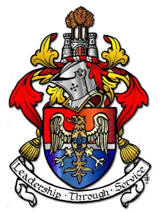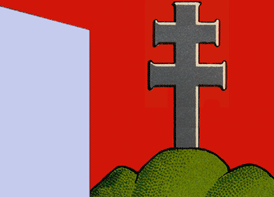| Royal Ancestors from Hungary |
|
|
Royal Ancestors from Hungary INTRODUCTION The region constituting contemporary Hungary was part of the ancient Roman provinces of Dacia and Pannonia. Situated on the periphery of the Empire, these provinces were among the first to fall to the Germanic tribes that began to overrun the Roman dominions in the closing years of the 2nd century AD. The Germanic tribes were later driven from the region by the Huns. After the death of the great Hunnish chieftain Attila, the Germans reoccupied the area, but were again expelled, in the 5th century, by the Avars, an Asiatic people. With the decline of the Avars’ power during the 8th century, the Moravians, a Slavic tribe, seized the north and east portions of the region and, between 791, and 797, the Frankish emperor Charlemagne added the remainder to his domains. The next conquest of the region occurred when, in 895 or 896, the Magyars, a tribe of uncertain racial origin, seized control of former Pannonia. Under the leadership of their semi-legendary chieftain Άrpád, the invaders conquered Moravia, raided the Italian peninsula, and made incursions into Germany. The Magyars ranged over central Europe for more than half a century after the death (907) of Άrpád, and in 955 devastated Burgundy. Later in 955 they were defeated by the Holy Roman Emperor Otto I on the Lech River. After this defeat, the Magyars maintained friendlier relations with the Holy Roman Empire, with the result that Christianity and Western culture began to penetrate Hungary. The Hungarian ruler Géza was converted to Christianity in 975. His son Stephen I, the founder of the Άrpád dynasty, received formal recognition as King of Hungary when, in the year 1001, Pope Sylvester II granted him the title of “Apostolic Majesty,” an appellation retained by the Hungarian kings for more than nine centuries. When Stephen, who was later canonized (1087), a new era began for Hungary. Christianity became the official religion, paganism was suppressed, royal authority was centralized, and the country was divided into counties for administrative purposes. No attempt was made, however, to ease the lot of the non-Magyar sections of the population. Treated as subject races, they were forced to shoulder a disproportionate burden of toil and taxation. This aspect of Hungarian civilization endured for many centuries. After Stephen’s death a pagan reaction developed, and his immediate successor had to content also against barbarian and German invasions. Ladislas I “The Saint” (1077-1095), renowned for his wise legislation and for great personal valor, arranged an alliance with Pope Gregory VII during the Investiture conflict. Thus strengthened, Hungary again became a powerful kingdom. Stephen subjugated Croatia, Bosnia, and part of Transylvania, and his successor Koloman (1095-1114) gained possession of part of Dalmatia. Royal authority declined in Hungary during the 12th century, chiefly because of internal strife instigated by the Byzantine emperor Manuel I Comnenus. Seizing control of the Hungarian throne, he bestowed huge grants of the crown lands on partisans among the native nobility, thereby providing substantial foundations for the development of feudalism. The Byzantine influence disappeared after the death (1180) of Manuel, but the barons retained their privileged status. King Andrew II, who ascended the throne in 1205, attempted to re-establish a centralized regime. In 1222 he issued the Golden Bull, sometimes called the Hungarian Magna Charta, which extended various rights, including tax exemptions, to the nobility. Although the decree gained some adherents for the king among the weaker barons, it failed to reduce the power of the great landowners. During the reign (1235-1270) of Andrew’s successor Béla IV, Hungary was overrun by Mongol invaders. Most of the Mongols withdrew from the country in 1241, but subsequent wards, notably with Austria, and further royal concessions to the barons accelerated the disintegration of the kingdom. Civil war raged in Hungary from 1301 to 1308, the year of the death of Andrew III, the last Άrpád king. Charles Robert of Anjou, who secured election as sovereign of Hungary in the same year, restored order, imposed limitations on the barons, and generally consolidated the realm. During his reign, which ended in 1342, Charles also made a number of territorial acquisitions, including Bosnia and part of Serbia. Through his marriage to the sister of Casimir III of Poland, he insured the succession of his son Louis to the Polish crown.
Hungary
|

